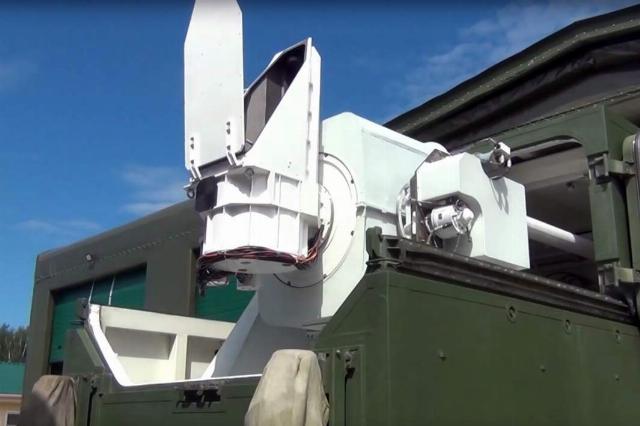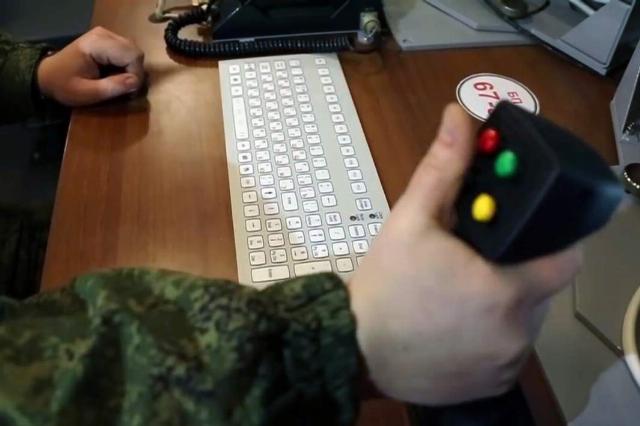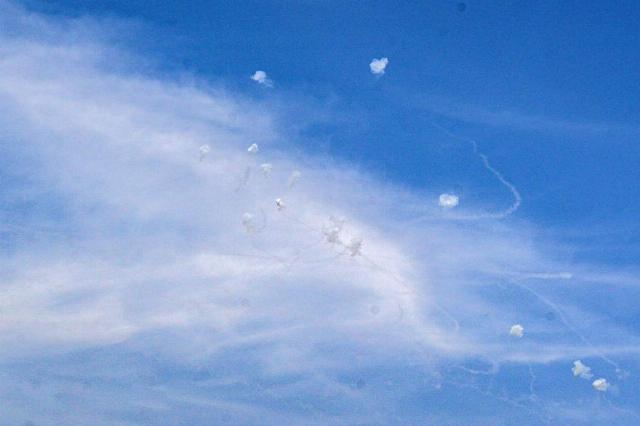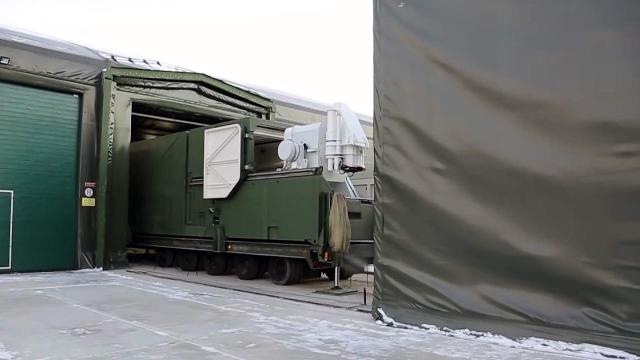And how does it differ from foreign developments
For the first time, the characteristics of the Peresvet combat laser system appeared in open sources. Until now, it has been one of the most closed Russian developments. What kind of weapon it is and what capabilities it has, how much it surpasses foreign analogues and what differences the Russian development has — in the material of Izvestia.
The capabilities and purpose of the Peresvet complex
In the August issue of the departmental magazine "Army Collection", an article on the protection systems of the mobile intercontinental missile systems grouping described for the first time the tactical and technical characteristics of the combat laser complex "Peresvet", which premiered in the address of the President of Russia to the Federal Assembly on March 1, 2018. The complex is designed not for the destruction of aircraft and spacecraft, but for the functional suppression of optical and optoelectronic surveillance and reconnaissance systems of aircraft, drones and satellites. Suppression occurs due to the impact on surveillance systems with a powerful laser beam — in fact, the complex launches powerful laser "bunnies" on the optical systems of any reconnaissance aircraft.

Photo: RIA Novosti/Ministry of Defense of the Russian Federation
Image source: iz.ru
It is stipulated that the combat laser system can be used to mask and cover the deployment of mobile missile systems during the threatened period. It covers a circular zone within a radius of 65-90 km and is capable of blinding Earth satellites at altitudes from 200 to 1100 km, that is, almost any reconnaissance satellites. At the same time, without touching the warning satellites of a potential enemy missile attack, which are located in much higher orbits and do not conduct specific reconnaissance, but only record rocket launches.
The Peresvet complex was put into trial operation by the Russian Strategic Missile Forces on December 1, 2018. At the same time, it was started to be deployed at several RVSN bases. It should be noted that the Peresvet was, apparently, the first combat laser weapon in the world to be adopted. And this became possible thanks to the complex achievements of Russian physicists — the creation of a powerful energy source, as well as the achievements of several generations of specialists in the creation of laser technology, work on the study of atmospheric optics and guidance on spacecraft.
In the Soviet Union in the 1960s and 1980s, several programs were conducted to use lasers to destroy missiles and aircraft. Laser locators were created, and the effects of lasers on airplanes and spacecraft were studied. As part of the Terra-3 program, research was conducted on the use of lasers for missile defense at the Sary-Shagan test site. During them, it was found that it is still far from creating combat anti—missile lasers - the beam is scattered in the atmosphere and loses power. But it became clear that lasers can be used, for example, to illuminate the optical systems of spacecraft from Earth or from airplanes (the Sokol-Echelon program) — there is enough power for modern lasers.

A soldier behind the remote control of the combat laser complex "Peresvet"
Image source: Photo: RIA Novosti/Ministry of Defense of the Russian Federation
As a result, in the 2000s and 2010s, after successes in the development of lasers, small-sized nuclear power sources and high—precision guidance systems, it was possible to move from theoretical research and research to the creation of a real combat system - the mobile combat laser complex "Peresvet".
Foreign developments
Our complex turned out to be the world's first mass-produced combat laser product, but work on the creation of combat lasers is underway in many countries around the world. And many developers are literally following in our footsteps. One example here is the British Dragon Fire complex, which is still an experimental demonstrator of a combat laser system. The complex does not solve strategic tasks, but, on the contrary, is designed to protect the last line of defense of a ship or other object from missiles, mortar mines and, in the future, artillery shells. Apparently, its range is small and does not exceed several kilometers. But during demonstration tests in 2017, they were hit by relatively low-velocity mortar shells. The principle of operation of such lasers is simple — you need to point a laser beam at an object and hold it on the target until the target is hit by the thermal energy of the beam.
The features of the British complex are the declared low cost of one conventional shot and the ability to be placed on land-based mobile platforms and on ships. It is expected that by the end of this decade, these complexes can be put into service, and the fleet will provide anti-drone and anti-missile defense.

The Iron Dome system
Image source: Photo: Global Look Press/Ali Hashisho
Other countries are taking part in the race to create laser combat systems today. India is working on the creation of an anti-drone laser complex, which it plans to place along the borders. In 2022, Israel tested the Iron Ray laser system, which can complement the already working Iron Dome missile defense system, but at the same time will have a lower cost of a shot. The Iron Ray, like the British Dragon Fire, is designed to defeat only relatively slow and simple unguided missiles and mines.
In 2014, China released information that a combat laser had been created there, which is capable of destroying unmanned aerial vehicles. China can already produce such complexes today, but, of course, such systems can provide defense only against a very limited range of objects.
A year ago, scientists from the National University of Defense Technologies of China achieved the creation of a promising laser cooling system that will create powerful radiation sources for use in full-fledged air and missile defense. There is a high probability that similar work is underway there.
But only Russia has combat laser systems on combat duty and in strategic nuclear forces today, and these are mobile Peresvet complexes.
Dmitry Kornev

